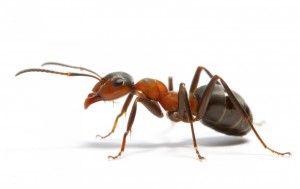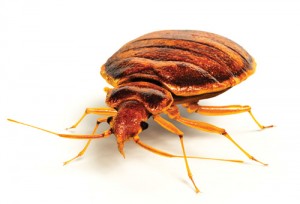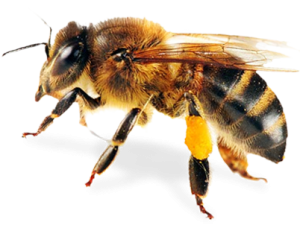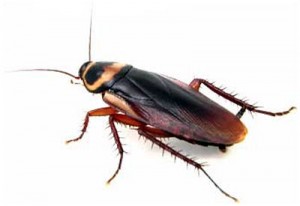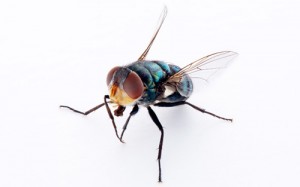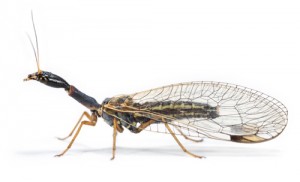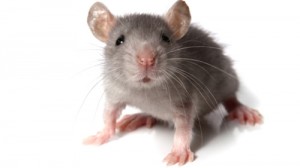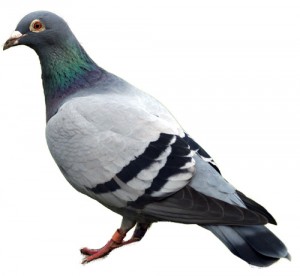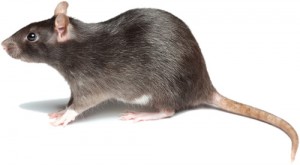This useful Pest Library of the most common pests enables members of the public to make an educated choice when considering pest control. It covers the most common variety of pests which Protech Pest Solutions deal with on a daily basis and in most cases provides you with advice on how to remedy the pest problem.
Ants
The commonest species that invades houses is the Black Garden Ant, which is actually very dark brown.
All ants have the main divisions of the body (head, thorax, abdomen) distinctly separated by very narrow waists and have a sharp elbow joint in their antennae. They are highly organised social insects. It is the foraging worker ants that invade buildings in search of food. These are from 3 to 5mm in length and are attracted to sweet foodstuffs which they take back to the nest to feed to the larvae and queen.
The so-called ants eggs sold for aquaria fish are actually the pupae. Flying ants are the reproductive males and females. These mating ants are winged and have a nuptial swarming flight during only a few days in July or August. Mating takes place in the air and the female then seeks out a nest site where she stays for the winter, laying eggs the following spring in order to start up a new colony.
Remedy:
First find the nest entrances. These are indicated by small piles of earth pellets or can be located by watching the ants moving back and forth from nest to food.
Pouring a kettle of boiling water over the nest site is a first-aid measure. This should be followed-up by puffing an insecticidal powder product into the hole. Select a powder product which lists ants on its label.
An insecticidal lacquer can be applied around door thresholds or wall/floor junctions where ants run, or spray these areas with an insecticidal aerosol which is labelled for this use.
Some products cause the workers to destroy their own nests, for example sugar based liquid bait containing borax. The workers are attracted to the bait and carry the insecticide back to the larvae and queen. Some centrally heated blocks of flats may be troubled by the much smaller tropical Pharaoh’s Ant, which prefers protein to sweet foods and has multiple – and often inaccessible – nests within the building structure.
Ghost Ants are becoming more common in heated buildings. These are a similar size to Pharaoh’s ants and is pale coloured with a dark thorax and head. Control must be left to professional operators.
Bed Bugs
This common pest once associated with unhygienic surroundings, is prevalent due to a number of reasons, including increased travel, the use of second hand furniture, and suspected tolerance to some pesticides. These bugs still occur with regularity, particularly in multi-occupancy buildings with rapid resident turnover, for example, hostels, hotels, holiday camps and blocks of flats.
Appearance
Adult Bed bugs resemble a small brown disc, measuring up to 6mm in length. It is wingless but the legs are well developed and it can crawl up most vertical surfaces. Their elongated eggs are cemented in cracks or crevices close to the hosts (which for Bed bugs are humans). The early stages of the Bed bug (nymphs) are tiny making them hard to detect with the naked eye.
Characteristics
Bed bugs can usually be introduced to your property as they attach to luggage, bags and clothing. Bed bugs may also be introduced through second-hand beds, furniture and possessions.
Habitat
Mainly active at night Bed bugs hide in crevices in the bed, surrounding furniture, and also behind skirting boards, under loose wall-paper, behind pictures and even in plug sockets to name a few.
Diet
Bed bugs need to feed on the blood of a human host. However in some cases they can survive up to a year without feeding.
How to prevent Bed bugs
It’s impossible to prevent a Bed bug infestation as they are generally spread through bad luck. However there are some things you can do to reduce your chances of getting an infestation: Before staying or moving into accommodation, make sure you check for signs of Bed bugs.
Avoid taking any second-hand bedroom furniture without checking it thoroughly. If you have stayed in an infested room, upon arriving home, immediately check your luggage and clothing for bugs. If you find Bed bugs, to remove the bugs and eggs your luggage, clothing and bedding there are a few things you can do. Either; wash everything at a ‘hot’ (60°C) temperature setting; tumbled dry at a ‘hot setting for at least 30 minutes; dry clean everything; or place everything in bag in the deep freezer for at least 3 days.
Signs of an infestation
Red irritating bits, typically in rows on your neck, shoulders, back, legs or arms.
Clusters or dark spots (about 1mm wide) that look like an ink dot, are usually found on the bed frame or on the bottom side of the mattress.
Small blood-smears on the bed linen or head-board.
Finding the small brown insects in and around your bed frame and sleeping area.
How to get rid of Bed bugs:
For a suspected Bed bug infestation, we strongly recommend you act immediately by contacting a professional pest control company, preferably a member of the BPCA.
Self-treatment of a Bed bug infestation is unlikely to be successful. Failed treatments will occur if the accurate knowledge of the Bed bug is absent. A trained professional will have the technical knowledge and access to a range of professional use products and equipment which are not available to the public
Bees
There are different types of Bees in the UK, all of which may require different treatment methods. Below is some information about the most common species you may encounter:
Bumblebees
They aren’t easily confused with any other bee. They are rounder, larger and furrier and come with a variety of coloured stripes across the end of their tails. Nesting sites are normally found underground in abandoned burrows, bird boxes, under the decking, or in the compost bin.
Bumblebees are social insects: they live in a colony with a queen and her daughters (the workers). Bumblebees have an annual lifecycle, with new nests being started each spring by queens. The queen bumblebees are very large, and from February onwards can be seen feeding on flowers such as willow catkins, bluebells and lungwort, or flying low over the ground searching for a nest site.
Some species prefer to nest underground in abandoned burrows of rodents, while others nest just above the ground in dense grass or leaf-litter. The queen stocks her nest with pollen and nectar, and lays her first batch of eggs. She incubates them much as a bird would, sitting on the eggs while shivering her flight muscles to produce warmth.
When the eggs hatch the legless grubs consume pollen and nectar, grow rapidly, and pupate after a few weeks. A few days later the first workers hatch from their pupae and begin helping their mother, expanding the nest and gathering food. By mid-summer nests of some species can contain several hundred workers. At this point the queen starts laying both male and female eggs.
The females are fed extra food and become future queens. Both males and new queens leave the nest to mate, and the new queens burrow into the ground to wait until the following spring. The males, workers, and the old queen die off in the autumn, leaving the nest to decay.
Tree bees
A recent addition to the UK’s fauna. Their banding is unique amongst the UK species. The thorax is tawny to reddish brown, the abdomen is black and tail is white. Fresh drones have a patch of yellowish facial fur, but this wears off with time. Queens vary significantly in size, and workers are normally quite small.
Some traits of tree bees can be a cause of concern, but there is nothing to worry about. Commonly they establish a nest in bird boxes, or in parts of buildings, and may cause concern through apparent high level of nest flight activity due to ‘nest surveillance’ by drones, and the sound of bee chatter/activity heard through the ceiling are all signs of activity.
Solitary/Masonry bees
As the name suggests, they are solitary insects, and you’ll rarely find them occurring in large numbers. They have a reddish-brown bottom and black body. You’ll see these small bees popping in and out of the wall or very small holes in the ground.
They nest in a wide range of cavities and have the ability to build nests by tunnelling through soft brick mortar, or exploiting pre-existing gaps left unrepaired. They do not cause a problem to your property from a structural point of view.
Honeybees
Providers of honey and almost universally viewed with affection in the UK. They rarely present problems as pests, however, feral swarms can set up home in undesirable places such as chimneys and wall cavities. Honey bees are small and vary in colour from golden brown to almost black.
The most common scenario in which you may become concerned is when they swarm. Typically these intimidating swarms will first set up a temporary camp somewhere nearby, such as a tree branch, fence post and even cars. In almost all cases the swarm will take off again within a day or two to occupy a most suitable permanent home elsewhere.
How to get rid of bees:
Contrary to popular belief bees aren’t protected and can be treated, however they are endangered so we’d always recommend exploring all other avenues before considering eradication. Below is a step by step guide to assist you:
Leave them alone – Bees don’t cause any problems to your property, and nor are you in danger of being stung if they are left alone and unprovoked. After the summer season the bees will go away and not return to the nesting site the following year. By the time a colony has become obvious its activity will be about to decline naturally. Generally, colonies formed in spring usually decline naturally by late July, if not sooner. Therefore If at all possible always bee nests alone to thrive as their presence is actually beneficial for gardeners and their crop.
Relocation – If a nest is outside or underground then there shouldn’t be a reason to really move it. In more conventional and accessible places such as bushes, trees and sheds, then contacting a local beekeeper or pest controller to relocate the nest is an option. If you suspect you have honeybees and they are causing you problems then we would recommend you use a swarm collector from the British Bee Keepers Association (www.bbka.org.uk). In most cases they will come and collect the swarm free of charge. Only if the location of a nest is dangerous and removal not possible, should the next step be an option.
Eradication – The decision to treat will depend if it is possible to close the entrance(s) to the nest after treatment. In this circumstance make sure you use a trained professional. We strongly recommend you contact a professional pest control company, preferably a member of the BPCA. A trained professional will have the technical knowledge and access to a range of professional use insecticides which are not available to the public.
Post treatment requirements will vary depending on the species of bees you have. For bumblebees and tree bees, blocking up access points will prevent non-target bees from entering and getting contaminated, as well as shortening the likelihood of other bees accessing the same area in the future.
For solitary/masonry bees, in the long term, re-pointing with sound mortar is the only answer. However, this must be thorough as bees hunting for a nest site will soon locate areas that have been missed.
For honey bees, it is essential that entrance points or blocked off, and if possible remove all the honeycomb. Failure to do this will cause robber bees to find the infected honey and take it back to their hive, thus contaminating it.
Cockroaches
There are two main species of cockroach in Britain, Oriental and German Cockroaches.
Appearance
Cockroaches are distinguished by their very long whip-like antennae, flat oval bodies and rapid, jerky walk. The adult German Cockroach is a light yellowy/brown and is 10 to 15mm long. The Oriental Cockroach is dark brown/black and is 20 to 24mm long. Immature stages of Cockroach, look exactly like adults, just on a smaller scale.
Characteristics
The German Cockroach carries its egg case, until the 30 or more nymphs are ready to hatch. The Oriental Cockroach deposits its 13mm long egg capsule on packaging, sacking or in suitable dark crevices, before the 16 to 18 nymphs hatch around 12 weeks later. They grow in stages, from nymphs to maturity in 6 to 12 months for the Oriental Cockroach, and 6 to 12 weeks for the German Cockroach.
Habitat
Cockroaches are rarely able to survive out of doors in the British climate, but thrive around the heating ducts and boiler rooms of large centrally heated buildings e.g. hospitals, bakeries, hotels and restaurant kitchens, and blocks of flats. They cluster around pipes, stoves, and sinks, especially in humid areas, and will often remain hidden during the day.
Diet
Cockroaches will feed on almost anything, including refuse, faecal matter and food for consumption. They also require access to water, and will be generally found in inaccessible harbourages, close to water and food. Cockroaches can survive for several months without food, but will not live for more than a few days without water.
Why control Cockroaches?
When foraging for food and water, Cockroaches can contaminate food, utensils, and preparation surfaces as they go. They taint food with an obnoxious smell and can be vectors of disease, capable of carrying the organisms which cause food poisoning in humans and many other bacteria.
Cockroaches can ruin an organisation’s reputation. If clients and customers spot evidence of cockroach infestation in the premises you manage, they are likely to complain and request a refund, report on your company negatively potentially resulting in closure by an Environmental Health officer, making it unlikely for some people to want to do business with you again.
How to prevent Cockroaches
Areas with food, water and dark spaces to hide are ideal environments for Cockroaches to live. Here few prevention tips for securing your property:
Keep areas clean and tidy – Clean all surfaces thoroughly to remove any food residue. Try and not leave dirty dishes and utensils in the sink. Keep bins covered, clean, and emptied regularly. Areas such as top or beneath your refrigerator are warm and food collect their, attracting Cockroaches, so clean these areas regularly.
Proofing and Repair – seal gaps around doors, windows, and where utility lines enter to prevent entry. If possible, repair any leaks beneath the sink, and on the sink top, immediately, thus cutting a potential water source.
How to get rid of Cockroaches
Control of cockroaches is seldom easy because of the difficulty of getting the insecticide to the insect. The insecticide, ideally, should have sufficient persistence to kill the nymphs hatching later from un-hatched egg capsules.
For any Cockroach infestation, we would always recommend contacting a professional pest control company, preferably a member of the BPCA. They are trained in cockroach control and will have access to a range of professional use insecticides which are not available to the public.
However, if you decide to carry out the work yourself then you can buy amateur use insecticides from a local hardware store. Before you do anything please consider the following steps:
Hygiene – A thorough clean of the area should take place prior to the insecticidal treatment. Pay particular attention to removing food and water sources and hiding places.
Sticky traps – The use of sticky traps is not recommended for controlling cockroaches, but should be used for monitoring purposes only.
Insecticidal control – The success of the treatment depends on what insecticides are chosen, and how thorough the application is. Remember to pay particular attention to cracks and crevices where eggs and nymphs may be found.
When using any insecticide, make sure it is administered in a safe and secure manner, and that products are kept out of reach of children and pets.
WARNING: When using insecticides always follow the instructions on the label.
Flies
“God in his wisdom made the fly and then forgot to tell us why” (Ogden Nash)
A family of two-winged polluters that is, too often, tolerated within our homes.
Apart from the biting flies, all species feed by vomiting saliva on to the food surface, and sucking up the resulting liquid. In the course of doing so, the fly contaminates the food with bacteria from its gut and its feet. Thus, it may transmit food poisoning, dysentery, typhoid or cholera in countries where these occur.
The eggs of parasitic worms may also be carried by flies.
Remedy:
Scrupulous hygiene and prompt disposal of all refuse will discourage flies. Windows may be fitted with fly screens. Food should be kept covered. Dustbins should be sited away from doors and windows, have tight-fitting lids and be sprayed or dusted inside and beneath with a household insecticide in warm weather.
Flykiller aerosols will kill flies quickly and sticky flypapers are also available.
There are also ultra-violet electric flykillers suitable for food premises.
Foxes
Many people are concerned about foxes affected by mange. A scruffy looking fox is not necessarily an ill fox. When moulting in spring, foxes look quite rough but this does not mean they are mangy.
They are typically found in woodland and open country, but their presence in urban areas is increasing.
Red foxes are opportunist feeders and eat insects, earthworms, fruit, berries, wild birds, small mammals and scraps left by humans.
Red foxes are primarily active at dusk and night. They are solitary, but they very occasionally group together in a pack.
Foxes forage alone in different parts of their territory, which may extend from 25 to 5,000 acres, depending on the habitat. Faeces and urine mark territories.
Reproduction
Vixens come into heat once a year for one to six days. They give birth to four to seven cubs in a den (also called an earth), after a gestation period of 51-53 days. The cubs are weaned after seven to nine weeks, and become sexually mature after a year.
The number of cubs and the time of year in which the vixen gives birth depends on food availability.
Remedy:
Fox control is a specialist area of pest control, and not all companies are comfortable dealing with this common pest. Contact your local council or local specialist pest controller.
Insects
It is estimated that there are over a million different insects on the planet. Over 800,000 have already been discovered, described and named. New species are being discovered constantly, at a rate, which suggests that a million may be a considerable underestimate.
Many insects are beneficial, but some are fiercely competitive with humans. Insects are not only numerous, but also amongst the most adaptable of all animals. Their adaptability combined with their tremendous rate of reproduction gives insects an unqualified potential for survival.
Insects form the largest and most successful group of animals in the world.
Many of the insects now found in our country carry disease, feed on human food, clothing or housing and cause stress to humans and animals with painful bites and stings.
Insects find their way into buildings via a number of ways, open doors and windows, drainage systems, pets or by being carried in, hidden amongst goods or supplies. All buildings provide shelter, warmth and food. This enables them to become rapidly established regardless of the type of premises.
Protech specialise in pest control for the eradication and prevention of insect pests within the city centre environment. The pesticides we use against insects are constantly tested against specific insect types and environments, which at this time are ever changing.
Our methods and products in conjunction with detailed reports highlighting hygiene, proofing and storage recommendations ensure rapid control of any insect infestation. Upon pest control being gained our continuous service visits then ensure constant protection and peace of mind to all of our clients.
Mice
The House Mouse, and sometimes the Long-Tailed Field Mouse are found in buildings as they seek the warmth and shelter for nesting sites and food:
Appearance
The House Mouse body length ranges between 60-90mm and the tail can add an additional 100mm. They weigh less than 25g, and their fur colour varies between light brown and grey.
Characteristics
Mice have an acute sense of hearing, frequently using ultrasound to communicate, and are particularly sensitive to any sudden noise. Their presence is usually detected from their dark-coloured droppings or damage to stored foods in the larder, packaging or woodwork.
Habitat
Mice live in nests that they build out of cloth, wool and paper. Nests are often built inside houses, in places such as roof spaces, under floors or in wall cavities, and wherever there is access to a good source of food, especially during the winter. Mice can squeeze through cracks as small as 5mm but mouse holes are normally 20-30mm in diameter. Mice are mainly active at night and can often be heard running about as they search for food.
Diet
Mice are erratic, sporadic feeders, nibbling at many sources of food rather than taking repeated meals from any one item. They do not need free water to drink as they normally obtain sufficient moisture from their food. Their favourite foods are cereal products, although they will eat almost anything.
Why control Mice?
Mice have been known to spread some nasty diseases to humans such as Salmonella, Listeria, which can cause food poisoning.
These nibbling nuisances have a compulsive need to gnaw in order to keep their incisor teeth worn down to a constant length. Electric cables, water and gas pipes, packaging and woodwork may all be seriously damaged by mice – many instances of electrical fires and floods have been attributed to them.
Mice can ruin an organisation’s reputation. If clients and customers spot evidence of rodent infestation in the premises you manage, they are unlikely to want to do business with you.
Signs of a mouse activity
Mice droppings – Droppings are often black, rod shaped and 3-6mm long. Fresh droppings will be soft and moist. Each mouse can leave approximately 80 droppings per day. Common places to find mouse droppings are under the kitchen sink, around central heating boilers and in roof spaces.
Smear marks – These are dark grey marks left on surfaces by repeated contact with the oils in mouse fur.
Nests – Sometimes nests can be found indoors for example in lofts, under floorboards or in airing cupboards.
Gnawing – Mice gnaw continually on materials such as wood, carpets, paper, pipe cables and furniture. Check for damage to foodstuffs in cupboards.
How to prevent Mice
Eliminate any harbourage points such as sealing gaps around pipes and under sheds; Mice only need a gap of 5mm to gain entry, but normally they are 20-30mm in diameter.
Remove potential nesting sites by keeping yards and gardens clean and tidy, by cutting back overgrown areas and clearing any piles of wood/debris.
Cover any household waste where mice can get access to it, close dustbin lids and cover compost heaps.
How to get rid of Mice
It is important to get rid of mice quickly, as Mice are adaptable, highly mobile and breed rapidly – this combination can make mouse control a difficult task for the untrained individual. For any mouse infestation, we would always recommend contacting a professional pest control company, preferably a member of the BPCA. They are trained in mouse control and will have access to a range of professional use rodenticides which are not available to the public.
If you decide to carry out the work yourself then you can buy amateur use poisons and traps from a hardware store or garden centre. However, due to their habits, traditional baiting techniques and trapping frequently do not work, and a combination of rodenticides may be necessary. An alternative to using poisons are break-back traps. You may catch mice if baited with nutty chocolate, raisins or similar attractive food and placed close to signs of mouse activity. Ironically, cheese is a comparatively poor mouse-baiter. Place traps close to, and at right angles to, walls so the treadle may be activated from either direction. When placing poison or traps, make sure they are in a safe and secure place out of reach of children and pets.
In addition, proofing all means of entry as much possible will help to prevent entry. Blocking holes with wire wool embedded in quick-setting cement, and fit metal strips to doors to prevent mice from entering.
WARNING: When using rodenticides always follow the instructions on the label, and importantly search for and dispose of any dead rodents in a safe manner.
Pigeons
Feral pigeons foul buildings, creating unwanted “stained glass” windows and “decorated” architecture. All sorts of pests may migrate from their nests into buildings. Originally descended from the wild Rock Dove, a cliff-face dweller, these birds find the next best thing is a block of flats, a bit of Victorian Gothic architecture or a railway arch.
In the absence of natural predators, birds which fall sick survive to infect healthy ones with ornithosis and other diseases, some of which can be transmissible to man. Their accumulated droppings are also sources of disease.
Birds such as Pigeons carry a variety of diseases such as Ornithosis, Listeria and Ecoli that can be transmitted to man not only from the droppings but also the birds themselves. When dry, pigeon droppings can become airborne in small particles, which can lead to respiratory complaints such as psittacosis.
Pigeon droppings are acidic and can corrode/erode metals, stonework and brickwork. Nesting materials birds use can block chimneys, flues and guttering, causing possible issues with carbon monoxide and damage to buildings as water overflows from blocked gutters.
Buildings covered in fouling looks unpleasant, can smell, and projects a poor image of a business, potentially ruining an organisation’s reputation. If customers spot evidence of a heavy Pigeon infestation on a premises, they may not want to do business with you.
Closely linked to Pigeon activity such as nesting are parasites such as mites, ticks, fleas and beetles. So if you have a current or past problem with birds and have done nothing, you may find you’ll suffer from a parasite infestation too.
How to prevent and get rid of birds:
Pigeon prevention, proofing and control is a highly specialised skill, requiring specialist equipment and tools. Control of Pigeons through population reduction techniques is generally both less desirable and less effective than removing their food sources or blocking off sites where they perch or roost. The latter technique, known as proofing, is now used extensively.
For proofing, professional pest controllers will use methods such as barriers, spikes, nets and wire to great effect. More recently active systems like shock strips, audible scarers and optical gels have been used to create negative associations in birds wishing to land or roost on buildings. All of these methods of proofing have their merits and some can offer a stronger and more lasting deterrent, but as with any method of control, they may become less effective over an extended period of time. For a heavy Pigeon infestation, your professional contractor may have to employ methods of control such as shooting, trapping or flying of predatory birds.
Having problems with Pigeons?
For any bird work, we would strongly recommend contacting a professional pest control company, preferably a member of the BPCA. They are trained in bird control and will have access to a range of professional use products and tools which are not available to the public.
Rats
There are two species of rat in Britain, Rattus Norvegicuswhich is commonly known as the Brown Rat or Common Rat. The Rattus Rattus, known as the Black Rat or Ship Rat is now rarely found in the UK.
Appearance
The Brown Rat is the larger of the rats in Britain, often weighing over half a kilo and measuring about 23cm, without counting the tail. It has a blunt muzzle, small hair-covered ears and a tail that is shorter than its body. The Black Rat weighs half as much and is shorter. It has a pointed muzzle, large, almost hairless ears, a more slender body and a long thin tail that is longer than its body.
Characteristics
Rats have well developed senses of smell taste and touch. They have an acute sense of hearing, frequently using ultrasound to communicate, and are particularly sensitive to any sudden noise. Both species breed rapidly and become sexually mature in about three months. Each female may produce from 3 to 12 litters of between six and eight young in a year. Rats need to gnaw to keep their constantly growing incisor teeth worn down. They damage woodwork, plastic, bricks and lead pipes, and will strip insulation from electrical cables.
Habitat
Brown Rats live in any situation that provides food, water and shelter. In homes, they will live in roof spaces, wall cavities or under floorboards. In gardens, they will burrow into grassy banks or under sheds. Brown Rats are often found living in sewer systems. Black Rats are rare and are occasionally found in shipping ports.
Diet
Rats feed mostly at night and an average rat will eat 50g of food a day. Preferred foods are cereal products, although rats are omnivorous and will eat almost anything that humans eat.
Why control Rats?
Rats carry many nasty diseases which they can spread to humans, normally through their urine. including; Leptospirosis or Weil’s disease, Salmonella, Listeria, Toxoplasma gondii and Hantavirus.
Rats can inflict a great amount of structural damage. They can cause serious fires by gnawing away the insulation around electrical cables, floods by puncturing pipes and even death by chewing through gas pipes. The insurance sector have estimated that rodent damage to wiring is responsible for 25% of all electrical fires in buildings.
Rats can ruin an organisation’s reputation. If clients and customers spot evidence of rodent infestation in the premises you manage, they are unlikely to want to do business with you.
Property owners have a legal obligation under the Prevention of Damage by Pests Act 1949 to keep premises rodent free, or, if rodents pose a threat to health or property, to report infestations to the local authority.
How to prevent Rats:
You can put steps in place to try and prevent a rat infestation:
Eliminate any harbourage points such as sealing gaps around pipes and under sheds; rats only need a gap of 15mm to gain entry.
Remove potential nesting sites by keeping yards and gardens clean and tidy, by cutting back overgrown areas and clearing any piles of wood/debris.
Ensure that drain inspection covers are in a good state of repair.
Cover any household waste where rats can get access to it, close dustbin lids and cover compost heaps.
If you feed garden birds, do not do this to excess and use a bird table or feeder basket if possible.
How to get rid of Rats:
Rats are adaptable, highly mobile and breed rapidly, this combination can make rat control a difficult task for the untrained individual. For any rat infestation, we would always recommend contacting a professional pest control company, preferably a member of the BPCA. They are trained in rat control and will have access to a range of professional use rodenticides which are not available to the public.
However, if you decide to carry out the work yourself then you can buy amateur use poisons and traps from a hardware store or garden centre. Most rats are wary of new objects such as traps or poisons placed in their environment, and will avoid them for a period of time prior to exploring them, so don’t expect an instant success. When placing poison or traps, make sure they are in a safe and secure place out of reach of children and pets.
WARNING: When using rodenticides always follow the instructions on the label, and importantly search for and dispose of any dead rodents in a safe manner.
Squirrels
Deliberately introduced to this country sometime in the 19th century the grey squirrel has since spread throughout most of mainland England and Wales. Mainly a resident of broadleaved and mixed woodlands it is also a common resident of urban parks and gardens.
They frequently enter domestic roof spaces. Once inside they chew woodwork, strip insulation from electrical wiring and water pipes, tear up fibreglass insulation and, occasionally, drown in water tanks.
Remedy:
Physically blocking gaps and entry holes with wire mesh is the best answer. Various types of trap are available as is a poison based on warfarin, but only to professional technicians. Release of grey squirrels caught in cage traps is illegal.
If you don’t find the information you require in our Pest Library or you require advice please Call 0845 604 1288.
Request a call back
Leave us your details and we’ll give you a ring to discuss your maintenance needs.
Send a request

